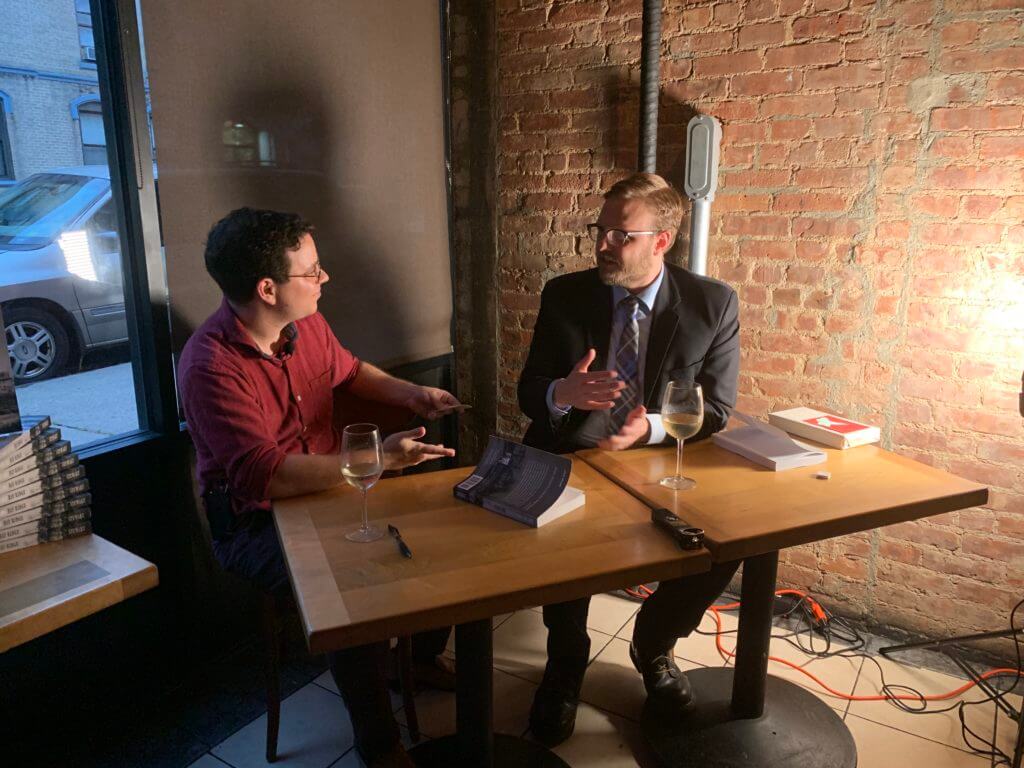‘The past is present’: Brooklyn historian unpacks history of Bay Ridge in new book

ebrooklyn media/Photos by Meaghan McGoldrick
A Brooklyn historian’s love for his hometown was laid bare Tuesday evening at a launch party for his latest book, “How Bay Ridge Became Bay Ridge.”
In celebration of the publication’s premiere, author Henry Stewart unpacked a bit of the neighborhood’s history in a live Q&A with Radio Free Bay Ridge co-host Dan Hetteix at a venue emblematic to some of the book’s own themes.
“At the Owl’s Head, we feel a sense of urgency surrounding the existing and growing culture of southern Brooklyn, where we grew up,” said John Avelluto, owner of the Owl’s Head Wine Bar, where the standing-room-only celebration spilled out onto the sidewalk.